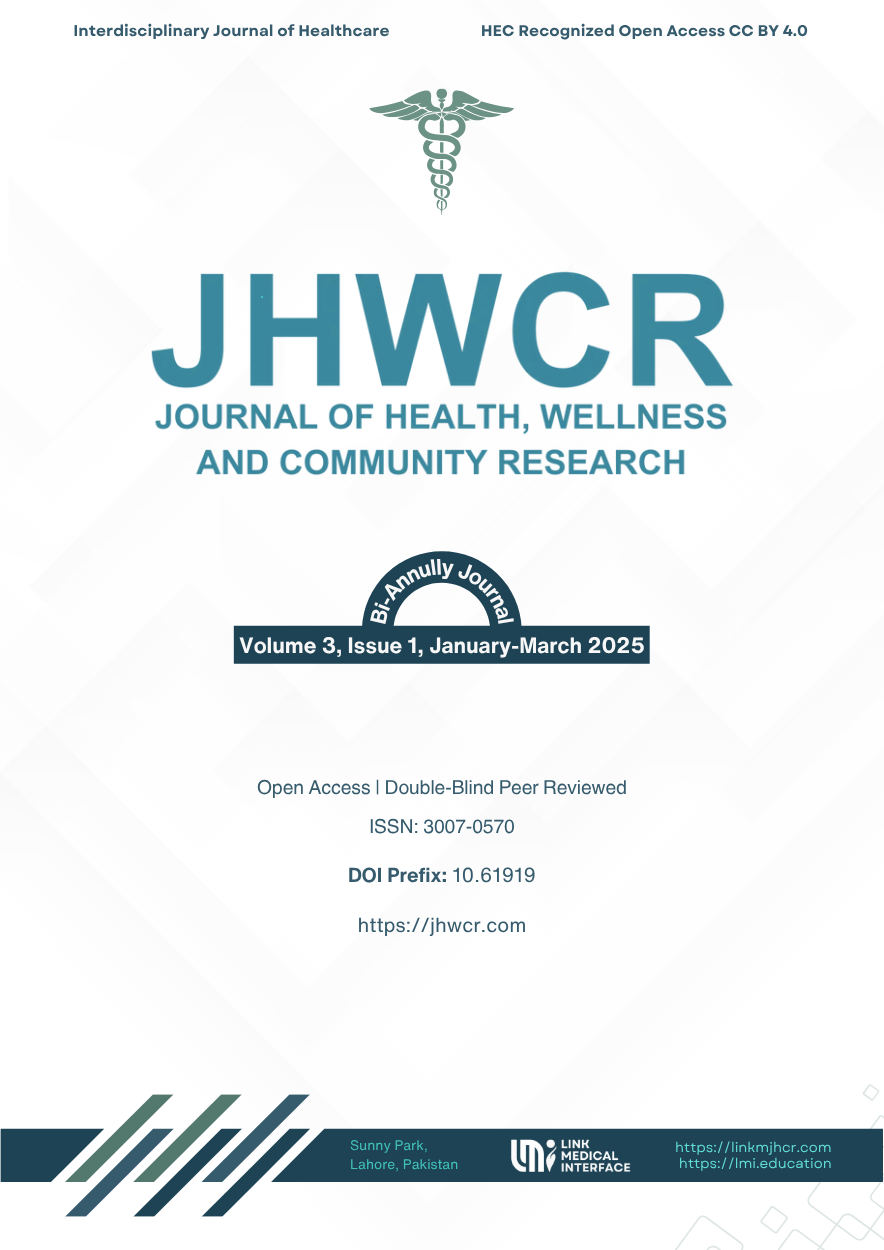Association Between Upper Trapezius Myofascial Trigger Points and Postural Stress Among Lactating Mothers
DOI:
https://doi.org/10.61919/rbb77c57Keywords:
Myofascial Trigger Points, Upper Trapezius, Postural Stress, Lactation, Ergonomics, Postpartum Depression, Musculoskeletal PainAbstract
Background: Lactating mothers frequently experience musculoskeletal discomfort, particularly in the upper trapezius region, due to repetitive feeding postures and insufficient ergonomic support. Objective: To determine the association between myofascial trigger points (MTrPs) in the upper trapezius and postural stress among lactating mothers, and to explore the correlation between psychological distress and MTrP prevalence. Methods: A cross-sectional observational study was conducted among lactating mothers (n = 197), aged 20–35 years, recruited via convenience sampling from public and private hospitals in Karachi, Pakistan. Participants breastfeeding for at least six months were included, while those with musculoskeletal injuries, neurological conditions, or postpartum complications were excluded. Data was collected using the Nordic Musculoskeletal Questionnaire (NMQ), Edinburgh Postnatal Depression Scale (EPDS), and clinical palpation for MTrPs based on Simons’ criteria. Ethical approval was granted by the Indus University Ethical Review Board (Ref: IU-ERB-PT-2023/07) in accordance with the Helsinki Declaration. Statistical analyses were performed using SPSS v27, employing chi-square and Pearson’s correlation tests (p < 0.05). Results: Among participants, 92.9% exhibited MTrPs in the upper trapezius. A significant association was observed between postural stress and MTrPs (χ² = 14.67, p = 0.002). EPDS scores positively correlated with MTrP presence (r = 0.306, p = 0.001), indicating a link between depressive symptoms and musculoskeletal pain. Improper head-neck positioning and lack of ergonomic support were primary contributing factors. Conclusion: Postural stress and psychological distress are significantly associated with upper trapezius MTrPs in lactating mothers. These findings emphasize the need for integrated ergonomic and mental health interventions in postpartum care to improve maternal musculoskeletal outcomes.
Downloads
Published
Issue
Section
License
Copyright (c) 2025 Anum Yonus, Maira Muneer, Okasha Anjum (Author)

This work is licensed under a Creative Commons Attribution 4.0 International License.


